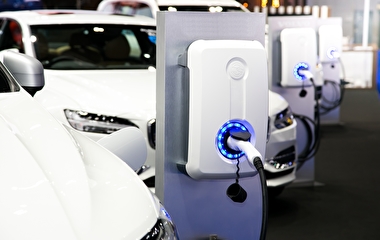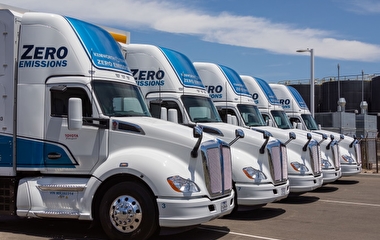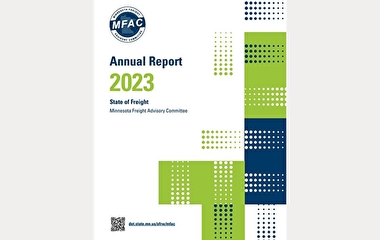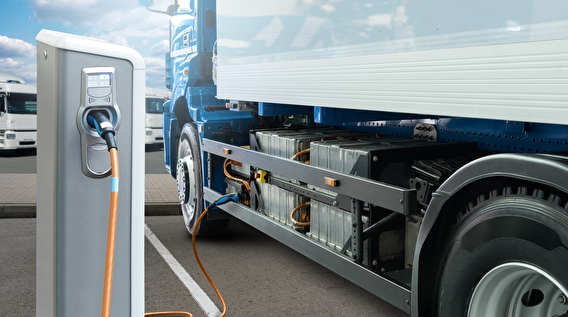
The goal of the annual Freight and Logistics Symposium is to bring together decision makers, practitioners, and researchers from different sectors of the freight industry and get them to talk about how Minnesota—and the country as a whole—should advance the industry.
The 26th annual symposium tackled the issue of zero-emission freight—asking if the industry should “go big or go incremental?” Presenters and panelists were asked where they think the industry currently is in terms of carbon neutrality, where they think it should go, and what challenges and opportunities to expect along the way.
“It’s something that both the public sector and the private sector have to deal with and respond to,” said Gina Baas, deputy director of CTS, in opening remarks.
Nationally, according to the Environmental Protection Agency, the transportation sector accounts for 29 percent of greenhouse gas emissions. Within that, according to the Federal Highway Administration, freight accounts for around 27 percent of greenhouse gas emissions, with the majority generated by trucking.
“I think we all know that we don’t solve decarbonization if we don’t solve commercial vehicle transportation,” said José Samperio, vice president and general manager of the North America On-Highway market with Cummins Inc. “The transformation is already here…The path toward lower emissions is already happening.”
Technologies are in the ‘messy middle’: Which ones will have staying power?
Decarbonization is currently in what panelist Mike Roeth, executive director of the North American Council for Freight Efficiency, described as the “messy middle.” Most of the freight industry is currently powered by diesel fuel, and switching to more expensive, low-carbon alternatives—which may or may not prove viable in the long run—is risky for profit-driven private businesses.
Samperio, the symposium keynote speaker, noted that there is a wide breadth of up-and-coming low-carbon technology. However, 95 percent of truck fleets in the US operate fewer than 10 trucks, and switching to low-carbon technology is an especially big gamble for them.
Still, Samperio said, “Any technology that helps you lower emissions today, economically, is good for you.”
Electrification is one of the main technologies being considered for decarbonization. It’s a risky way to go, however, because the vehicles tend to be more expensive, they don’t do well with heavy loads and long-distance trips, and they take a long time to charge (a cost that would be passed on to drivers, since companies pay them by the mile rather than hour).
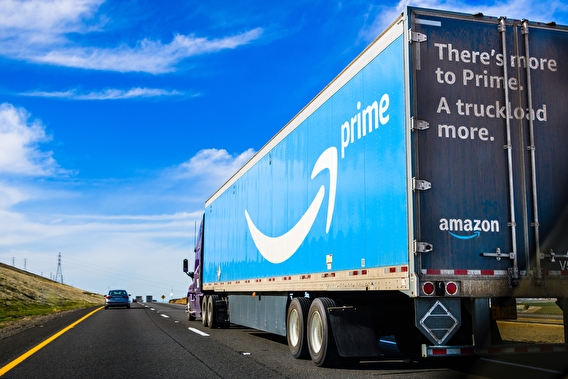
Ari Silkey, director of Amazon’s Surface Transportation organization in North America, said that Amazon has been piloting medium- and heavy-duty electric vehicles and finding the best use cases—usually lightweight, short-distance trips—within its transportation network for these vehicles, in addition to the custom electric vans used for Amazon deliveries. However, the industry still needs to develop the technology and charging infrastructure to support the longer routes in Amazon’s “middle mile,” which is typically 250–500 miles. Allen Doyel, who leads sustainability strategy at BNSF Railway, said that battery electric isn’t yet powerful enough to move a train, either.
Another option—hydrogen fuel—was the focus of presentations by two researchers.
Karen Bridges, a research specialist at the Humphrey School of Public Affairs, said hydrogen has better weight and distance capacity than battery electric vehicles. Another benefit is that it is much easier and cheaper to retrofit an internal combustion engine to run on hydrogen than it is to make it run on battery electric. Read more about her hydrogen-related research.
Joshua Stanislowski, director of energy systems development at the University of North Dakota’s Energy and Environmental Research Center, has been exploring the potential of hydrogen fuel cells in heavy vehicles for the Department of Defense; he hopes to apply the findings of this project to commercial vehicles such as snowplows.
Both speakers cautioned, however, that hydrogen and electrification need clean power sources to be truly carbon-neutral, as well as supporting infrastructure for charging, fueling, and maintenance.
Regulation vs. incentives—and who pays for infrastructure
Samperio noted that the freight industry is facing increasing pressure from regulatory bodies and customers to lower its carbon footprint. California, most notably, aims for all new passenger vehicles manufactured within the state to be zero-emission by 2035. Other states—including Minnesota—have adopted some version of the same goal, and there is action at the federal level to regulate emissions.
Jim Mullen, executive director of the Clean Freight Coalition, thinks these goals are moving too fast: “We have some very serious concerns that getting there isn’t going to work on these timelines, and it’s going to cause some problems.”
Doyel added that incentives are preferable to regulation when it comes to driving clean energy innovation. “California is trying to jump to the end game so quickly that [it’s] losing the ability to capture a lot of near-term emissions reductions through things like low-carbon fuels,” he said.
Infrastructure, manufacturing, dealerships, and maintenance for low-carbon technology will also need to be built up, Samperio said, and there’s a big question of who pays for it. Small companies typically lack the excess capital and will likely end up relying on infrastructure paid for and made public by either private businesses or the government.
“For years,” Samperio said, “there was this ultra-focus on the technology. And now we find ourselves talking more about the infrastructure challenge. You cannot make technology decisions unless you have a clear answer on the infrastructure, and vice versa. So it’s recursive.”
Thinking outside the box: Going big and going incremental
During the Q&A section of the symposium, several audience members brought up additional decarbonization strategies that take a more systemic angle.
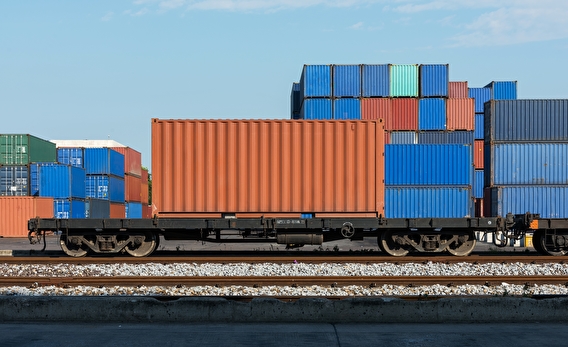
Jukka Kukkonen, an electrical and computer engineering instructor at the University of St. Thomas, pointed out that electric trains are already possible using electrified rails or overhead lines.
Mark Berndt, who serves as the freight planning practice leader for Quetica, also noted that the US freight system has many built-in logistical inefficiencies. Restructuring the freight system—by reshoring manufacturing or localizing the supply chain—could potentially cut emissions without any need for new technologies.
“We saw it during the pandemic—when, all of a sudden, we couldn’t get pharmaceuticals, so we started moving those supply chains back,” Berndt said. “It seems like we’re focusing on the vehicles, and we need to be more holistic about how we approach this issue if we’re serious about it.”
Panelists also offered some simple changes that could be implemented to reduce the carbon footprint of the freight industry.
Mullen, for example, said most freight trucks on the road are old—pre-2010—and replacing them with newer, more efficient diesel trucks would capture carbon reductions. Also, a number of small niches within the freight industry could be electrified without sacrificing performance—Doyel, for instance, noted that BNSF Railway piloted a project that used electric vehicles to move trailers around its railyards.
“I don’t think it’s either/or,” Mullen said. “Go big and go incremental.”
The symposium was sponsored by CTS in cooperation with the Minnesota Department of Transportation, the Minnesota Freight Advisory Committee, the Council of Supply Chain Management Professionals, and the Metropolitan Council.
—Sophie Koch, contributing writer
